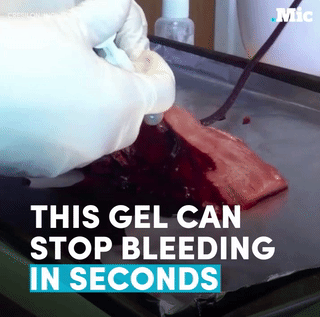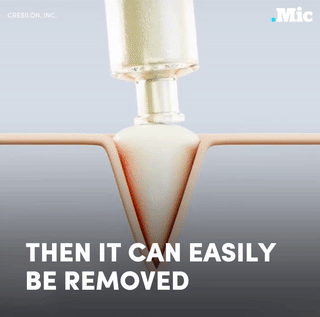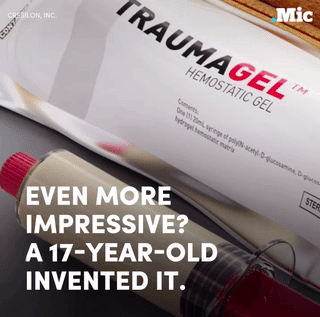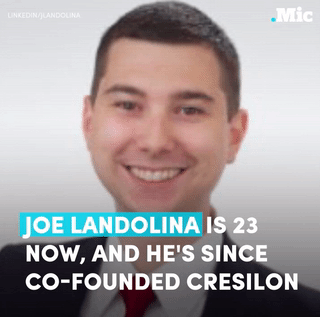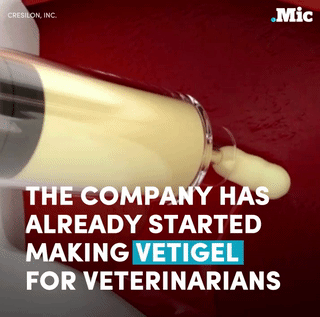Now We Know The (proposed) Names Of The Four New Elements, Here’s An Updated Graphic With More Information

Now we know the (proposed) names of the four new elements, here’s an updated graphic with more information on each! High-res image/PDF: http://wp.me/p4aPLT-1Eg
More Posts from Science-is-magical and Others

A group of astronomers is using a new method to search for hard to spot alien planets: By measuring the difference between the amount of light coming from the planets’ daysides and nightsides, astronomers have spotted 60 new worlds thus far.
Continue Reading.
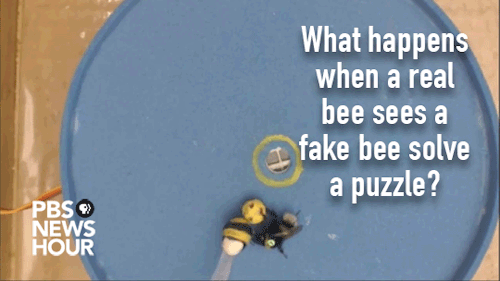
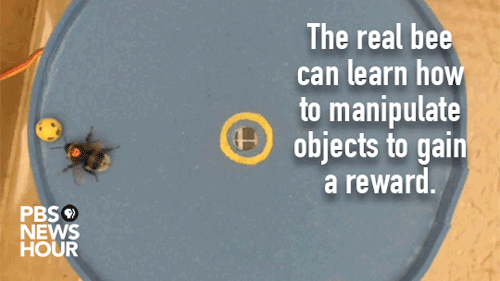
What does it take to teach a bee to use tools? A little time, a good teacher and an enticing incentive. Read more here: http://to.pbs.org/2mpRUAz
Credit: O.J. Loukola et al., Science (2017)

‘Smart fat cells’ cross blood-brain barrier to catch early brain tumors
An MRI contrast agent that can pass through the blood-brain barrier will allow doctors to detect deadly brain tumors called gliomas earlier, say Penn State College of Medicine researchers. This ability opens the door to make this fatal cancer treatable.
Gliomas are brain tumors that arise from glial cells, which help nerve cells to stay connected and send signals throughout the body.
Cancerous gliomas are uniformly fatal, with a median survival rate of 14 months from the time of diagnosis. But a new nanotechnology approach developed by Xiaoli Liu and Madhan Kumar in the Department of Neurosurgery could transform gliomas from a death sentence into a treatable condition.
Patients diagnosed with a malignant glioma can undergo surgery, chemotherapy and radiation to destroy the tumor, but the cancer will return.
“Patients typically don’t die from the tumor they initially presented with. Rather, they die from new tumors that come back in other parts of the brain,” said James Connor, Distinguished Professor of Neurosurgery.
These new gliomas tend to grow quickly and are often resistant to treatment because they spring from cancer cells that survived the first therapeutic assault. Glioma patients have follow-up MRIs to detect new brain cancers but the tests do not catch the tumors early enough to save lives.
That is because contrast agents used to outline gliomas on an MRI can only pass the protective blood-brain barrier once the tumors have grown large enough to cause damage to the barrier. Until then, the blood-brain barrier blocks 98 percent of small molecules and all large molecules from entering the brain.
To overcome this deadly limitation, Penn State researchers created “smart fat cells” called liposomes that can pass the blood-brain barrier in mice, seek out tiny cancerous gliomas like heat-seeking missiles and light them up on an MRI. The liposomes are loaded with the most commonly used contrast agent, Magnevist. On their surface, the liposomes are studded with proteins that target receptors on glioma cells.
The new contrast agent delivery system is more sensitive than traditional contrast-enhanced MRI, Connor said.
The researchers found that the liposomes entered the brain in healthy mice with uncompromised blood-brain barriers. Both the conventional and the new technique found large gliomas in mice with cancer, but only the liposome-encapsulated agent was able to detect smaller early-stage tumors. “The goal is to be able to get down to detecting single cancer cells,” Connor said.
The study was published in Journal of Neuro-Oncology.
It is not exactly known how the liposomes get past the intact blood-brain barrier, but they apparently do it without causing damage. In the study, mice showed no harm from the treatment.
This novel approach is an alternative to ultrasound, another promising method researchers are studying to get therapeutic agents into the brain. Ultrasound, however, causes temporary disruption to the blood-brain barrier, which allows not only the therapeutic agent to enter the brain, but also blood which could have medical implications.
“Ultrasound, with all of its good qualities, is disruptive to the blood-brain barrier, whereas we can get an agent to cross it without causing disruption.” Connor said.
The researchers said that in the future, smart fat cells will deliver chemotherapeutic drugs, along with contrast agents, to brain tumor patients so that cancer cells can be detected and wiped out in one step. They recently presented research on these next-generation liposomes at the Society for Neuro-Oncology meeting in San Antonio.
A neural network invents some pies

(Pie -> cat courtesy of https://affinelayer.com/pixsrv/ )
I work with neural networks, which are a type of machine learning computer program that learn by looking at examples. They’re used for all sorts of serious applications, like facial recognition and ad targeting and language translation. I, however, give them silly datasets and ask them to do their best.
So, for my latest experiment, I collected the titles of 2237 sweet and savory pie recipes from a variety of sources including Wikipedia and David Shields. I simply gave them to a neural network with no explanation (I never give it an explanation) and asked it to try to generate more.
Its very first attempt left something to be desired, but it had figured out that "P”, “i”, and “e” were important somehow.
e Piee i m t iee ic ic Pa ePeeetae a e eee ema iPPeaia eieer i i i ie e eciie Pe eaei a
Second checkpoint. Progress: Pie.
Pie Pee Pie Pimi Pie Pim Cue Pie Pie (er Wie Pae Pim Piu Pie Pim Piea Cre Pia Pie Pim Pim Pie Pie Piee Pie Piee
This is expected, since the word “pie” is both simple and by far the most common word in the dataset. It stays in the stage above for rather a while, able to spell only “Pie” and nothing else. It’s like evolution trying to get past the single-celled organism stage. After 4x more time has elapsed, it finally adds a few more words: “apple”, “cream”, and “tart”. Then, at the sixth checkpoint, “pecan”.
Seventh checkpoint: These are definitely pies. We are still working on spelling “strawberry”, however.
Boatin Batan Pie Shrawberry Pie With An Cream Pie Cream Pie Sweesh Pie Ipple Pie Wrasle Cream Pie Swrawberry Pie Cream Pie Sae Fart Tart Cheem Pie Sprawberry Cream Pie Cream Pie
10th checkpoint. Still working.
Coscard Pie Tluste Trenss Pie Wot Flustickann Fart Oag’s Apple Pie Daush Flumberry O Cheesaliane Rutter Chocklnd Apple Rhupperry pie Flonberry Peran Pie Blumbberry Cream Pie Futters Whabarb Wottiry Rasty Pasty Kamphible Idponsible Swarlot Cream Cream Cront
16th checkpoint. Showing some signs of improvement? Maybe. It thinks Qtrupberscotch is a thing.
Buttermitk Tlreed whonkie Pie Spiatake Bog Pastry Taco Custard Pie Apple Pie With Pharf Calamed apple Freech Fodge Cranberry Rars Farb Fart Feep-Lisf Pie With Qpecisn-3rnemerry Fluit Turd Turbyy Raisin Pie Forp Damelnut Pie Flazed Berry Pie Figi’s Chicken Sugar Pie Sauce and Butterm’s Spustacian Pie Fill Pie With Boubber Pie Bok Pie Booble Rurble Shepherd’s Parfate Ner with Cocoatu Vnd Pie Iiakiay Coconate Meringue Pie With Spiced Qtrupberscotch Apple Pie Bustard Chiffon Pie
Finally we arrive at what, according to the neural network, is Peak Pie. It tracks its own progress by testing itself against the original dataset and scoring itself, and here is where it thinks it did the best.
It did in fact come up with some that might actually work, in a ridiculously-decadent sort of way.
Baked Cream Puff Cake Four Cream Pie Reese’s Pecan Pie Fried Cream Pies Eggnog Peach Pie #2 Fried Pumpkin Pie Whopper pie Rice Krispie-Chiffon Pie Apple Pie With Fudge Treats Marshmallow Squash Pie Pumpkin Pie with Caramelized Pie Butter Pie
But these don’t sound very good actually.
Strawberry Ham Pie Vegetable Pecan Pie Turd Apple Pie Fillings Pin Truffle Pie Fail Crunch Pie Crust Turf Crust Pot Beep Pies Crust Florid Pumpkin Pie Meat-de-Topping Parades Or Meat Pies Or Cake #1 Milk Harvest Apple Pie Ice Finger Sugar Pie Amazon Apple Pie Prize Wool Pie Snood Pie Turkey Cinnamon Almond-Pumpkin Pie With Fingermilk Pumpkin Pie With Cheddar Cookie Fish Strawberry Pie Butterscotch Bean Pie Impossible Maple Spinach Apple Pie Strawberry-Onions Marshmallow Cracker Pie Filling Caribou Meringue Pie
And I have no what these are:
Stramberiy Cheese Pie The pon Pie Dississippi Mish Boopie Crust Liger Strudel Free pie Sneak Pie Tear pie Basic France Pie Baked Trance pie Shepherd’s Finger Tart Buster’s Fib Lemon Pie Worf Butterscotch Pie Scent Whoopie Grand Prize Winning I*iple Cromberry Yas Law-Ox Strudel Surf Pie, Blue Ulter Pie - Pitzon’s Flangerson’s Blusty Tart Fresh Pour Pie Mur’s Tartless Tart
More of the neural network’s attempts to understand what humans like to eat:
Perhaps my favorite: Small Sandwiches
All my other neural network recipe experiments here.
Want more than that? I’ve got a bunch more recipes that I couldn’t fit in this post. Enter your email here and I’ll send you 38 more selected recipes.
Want to help with neural network experiments? For NaNoWriMo I’m crowdsourcing a dataset of novel first lines, after the neural network had trouble with a too-small dataset. Go to this form (no email necessary) and enter the first line of your novel, or your favorite novel, or of every novel on your bookshelf. You can enter as many as you like. At the end of the month, I’ll hopefully have enough sentences to give this another try.



Life from the perspective of colour blind people
Deuteranomalia: This is caused by reduced sensitivity to green light. Deutan color vision deficiencies are by far the most common forms of color blindness. This subtype of red-green color blindness is found in about 6% of the male population, mostly in its mild form deuteranomaly.
Protanopia: Caused by a reduced sensitivity to red light due to either defective or a lack of long -wavelength cones (red cones). Some scientists estimate that being a protan is associated with a risk of a road accident equivalent to having a blood alcohol level of between 0.05 and 0.08 per cent.
Tritanopia: People affected by tritan color blindness confuse blue with green and yellow with violet. This is due to a defective short-wavelength cone (blue cone). Whilst Protanopia and Deuteranomalia are significantly more common in men, tritanopia affects both sexes in equal amounts.
Monochromacy: Only around 0.00003% of the world’s population suffers from total color blindness, where everything is seen in black and white.






Class in session as Planet X starts it off with our favorite dense objects:
Neutron Stars!
http://www.space.com/22180-neutron-stars.html
-
 surgikos liked this · 6 years ago
surgikos liked this · 6 years ago -
 profanities-of-common-sense reblogged this · 6 years ago
profanities-of-common-sense reblogged this · 6 years ago -
 fractal-fluctuation liked this · 6 years ago
fractal-fluctuation liked this · 6 years ago -
 science-is-magical reblogged this · 8 years ago
science-is-magical reblogged this · 8 years ago -
 wads-of-gabe liked this · 8 years ago
wads-of-gabe liked this · 8 years ago -
 sikomoro liked this · 8 years ago
sikomoro liked this · 8 years ago -
 pupcake2 liked this · 8 years ago
pupcake2 liked this · 8 years ago -
 midgardgurl liked this · 8 years ago
midgardgurl liked this · 8 years ago -
 ikaid liked this · 8 years ago
ikaid liked this · 8 years ago -
 filthymedusa liked this · 8 years ago
filthymedusa liked this · 8 years ago -
 holmsark liked this · 8 years ago
holmsark liked this · 8 years ago -
 spirit-of-the-universe-blog1 liked this · 8 years ago
spirit-of-the-universe-blog1 liked this · 8 years ago -
 limarioa-blog liked this · 8 years ago
limarioa-blog liked this · 8 years ago -
 iotacarinae reblogged this · 8 years ago
iotacarinae reblogged this · 8 years ago -
 maplefay reblogged this · 8 years ago
maplefay reblogged this · 8 years ago -
 the-seventhavenger liked this · 8 years ago
the-seventhavenger liked this · 8 years ago -
 sassysvga reblogged this · 8 years ago
sassysvga reblogged this · 8 years ago -
 burningupastartosaygoodbye reblogged this · 8 years ago
burningupastartosaygoodbye reblogged this · 8 years ago -
 gandalfsmagick555 reblogged this · 8 years ago
gandalfsmagick555 reblogged this · 8 years ago -
 gandalfsmagick555 liked this · 8 years ago
gandalfsmagick555 liked this · 8 years ago -
 gaffling liked this · 8 years ago
gaffling liked this · 8 years ago -
 iceinherheart-kissonherlips reblogged this · 8 years ago
iceinherheart-kissonherlips reblogged this · 8 years ago -
 cameraxxshy reblogged this · 8 years ago
cameraxxshy reblogged this · 8 years ago -
 cameraxxshy liked this · 8 years ago
cameraxxshy liked this · 8 years ago -
 williewonka804 liked this · 8 years ago
williewonka804 liked this · 8 years ago -
 norberthfimbo-blog liked this · 8 years ago
norberthfimbo-blog liked this · 8 years ago -
 no-words-for-iu liked this · 8 years ago
no-words-for-iu liked this · 8 years ago -
 fractalsareyourfriend-blog reblogged this · 8 years ago
fractalsareyourfriend-blog reblogged this · 8 years ago -
 fractalsareyourfriend-blog liked this · 8 years ago
fractalsareyourfriend-blog liked this · 8 years ago -
 phoensics-blog liked this · 8 years ago
phoensics-blog liked this · 8 years ago -
 gigilisette liked this · 8 years ago
gigilisette liked this · 8 years ago -
 danzlaverde reblogged this · 8 years ago
danzlaverde reblogged this · 8 years ago -
 deuxmachina reblogged this · 8 years ago
deuxmachina reblogged this · 8 years ago -
 ahunte21-blog liked this · 8 years ago
ahunte21-blog liked this · 8 years ago -
 lab403-blog reblogged this · 8 years ago
lab403-blog reblogged this · 8 years ago -
 thelabnotebook reblogged this · 8 years ago
thelabnotebook reblogged this · 8 years ago -
 willem2de liked this · 8 years ago
willem2de liked this · 8 years ago -
 widerhopf reblogged this · 8 years ago
widerhopf reblogged this · 8 years ago
